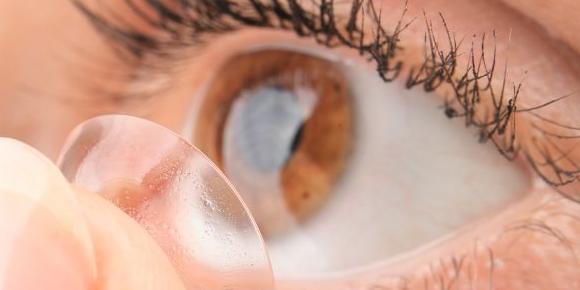
Contact Lenses Demystified: An In-depth Guide on How Contact Lenses Work
Contact lenses have revolutionized the field of vision correction, offering an effective alternative to traditional eyeglasses. But how exactly do these tiny, seemingly simple devices work to correct refractive errors such as myopia, hyperopia, astigmatism, and presbyopia? This comprehensive guide will delve into the fascinating science behind contact lenses, demystifying their function, types, and care, along with potential risks and the latest advancements in the field.
The Basics: What are Contact Lenses?
Contact lenses are thin, curved lenses designed to be placed directly on the surface of the eye. They work by focusing light correctly onto the retina, much like eyeglasses, but with the advantage of providing a more natural field of view, fewer distortions, and no fogging or slipping issues.
The Science Behind Contact Lenses
To understand how contact lenses correct vision, we need to delve into some basic eye anatomy and the concept of refractive error. The cornea and lens in a normal eye focus light rays precisely on the retina. However, in cases of myopia, hyperopia, astigmatism, and presbyopia, this light focus is disrupted, resulting in blurred vision. Contact lenses work to correct this by altering the path of light entering the eye to ensure it focuses correctly on the retina.
Inserting and Removing Contact Lenses
Correct contact lens insertion and removal are crucial for maintaining ocular health. Always start by washing your hands thoroughly to avoid transferring bacteria to your lenses. To insert, place the lens on the tip of your index finger, ensure it's not inside out, then gently place it on your eye. To remove, look up, pull your lower eyelid down, and gently pinch the lens of your eye.
Can I Sleep With My Contact Lenses On?
It is not safe to sleep with contact lenses unless they are specifically designed and approved for overnight wear. Sleeping with contact lenses can reduce the oxygen supply to your eyes and increase the risk of infections and complications. Some of the possible consequences of sleeping with contact lenses are:
Bacterial keratitis
This is an infection of the cornea, the clear layer that covers the front of your eye. It can cause pain, redness, blurred vision, and sensitivity to light. It can also lead to corneal scarring and vision loss if not treated promptly and properly.
Acanthamoeba keratitis
This is a rare but serious infection caused by a microscopic parasite that can be found in water sources, such as tap water, pools, lakes, and hot tubs. It can cause severe pain, inflammation, and corneal damage. It can also be difficult to treat and may require a corneal transplant in some cases.
Corneal ulcer
This is an open sore on the cornea that can result from an untreated infection or injury. It can cause severe pain, discharge, vision loss, and scarring. It may also require surgery to repair the cornea.
Corneal neovascularization
This is a condition where new blood vessels grow into the cornea due to a lack of oxygen. This can impair the clarity and function of the cornea and increase the risk of inflammation and rejection of contact lenses.
Innovations in Contact Lens Technology
The field of contact lenses is constantly evolving, with new research and innovation aimed at improving wearer comfort and eye health. Silicone hydrogel lenses, for instance, allow greater oxygen permeation, reducing the risk of eye complications. There are also ongoing developments in smart contact lenses capable of monitoring ocular health and glucose levels.|
Conclusion
Contact lenses are an ingenious innovation in vision correction. They offer an aesthetically pleasing alternative to eyeglasses and provide superior visual performance in many cases. Understanding how they work and how to care for them properly can help ensure a positive wearing experience. Remember, your eye health should always be the top priority when considering any form of vision correction.


